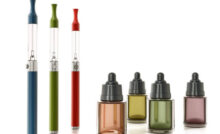What Is A Dermaplaning?


Dermaplaning is an exfoliation treatment that utilizes medical-grade scalpels to shave away facial hair. It is designed to help improve skin texture and diminish fine lines and wrinkles. Dermaplaning has become an increasingly popular treatment that can dramatically change its texture while also reducing signs of fine lines and wrinkles. To know more, check out Hydrafacial New York
Even though dermaplaning might appear dangerous, when performed by an esthetician or dermatologist correctly, it can actually be relatively safe and can even enhance other treatments by increasing results.
It is a form of exfoliation
Dermaplaning is an exfoliation procedure that uses a scalpel-type blade to safely and gently exfoliate facial hair and skin cells from all skin types with minimal downtime and side effects. Although not typically requiring general anesthesia, you may ask your healthcare provider if a numbing cream could be applied prior to starting treatment.
Dermaplaning, unlike shaving, does not cause bumps and ingrown hairs; instead, it only removes thin, fine facial hair that grows on top of the surface of your skin and does not make the existing hair grow back thicker or darker. Dermaplaning can also be useful if you have acne as it clears away dirt, debris and oil that clog your pores – as well as make application of makeup simpler.
If you have had previous episodes of cold sores, dermaplaning should be avoided as it could reactivate them. Furthermore, it should also be avoided in cases of sunburn, active acne, or flaring rosacea, as this treatment could worsen them further.
Home treatments of chemical exfoliants like retinol or glycolic acid should also be avoided to protect yourself. You can do the procedure yourself using only disposable razors explicitly designed for facial skin exfoliation. Leaving this process to trained professionals is recommended, however. You could get cut by their sharp blade and cause severe irritation; alternatively, you could also opt for chemical exfoliants at home, such as Retin-A or Glycolic Acid, that are available over-the-counter as these could provide better results than manual ones alone.
It removes dead skin cells
Dermaplaning is an increasingly popular beauty treatment used to remove dead skin cells and facial hair. It’s often recommended for people unable to use chemical exfoliators, as it can make their skin appear smoother and brighter. Dermaplaning also helps improve penetration of skincare products while prepping the face for other procedures like chemical peels or laser treatments.
At a dermaplaning session, your provider will use an electric-razor-like tool to use a sterile blade to scrape away dead skin and peach fuzz from your surface of skin, revealing newer and fresher-looking layers below. This treatment is quick and painless for most individuals – additional options, such as numbing cream, are also available for those concerned about discomfort.
Dermaplaning can do more than remove dead skin cells; it also offers other benefits, including treating acne scars, dryness, sun damage, and small wrinkles, as well as helping reduce large pores. Dermaplaning may be performed at a dermatologist’s office or by an esthetician; its overall cost-efficiency makes it an attractive option compared to more invasive exfoliation techniques.
Although dermaplaning is safe, people must select an experienced professional when opting for this process. Since the blade used is similar to one used to remove body hair, mishandling may pose potential hazards. Bankson recommends washing one’s face immediately following their dermaplaning treatment and applying moisturizer containing hydrating ingredients and skin barrier-protecting ceramides as a further safeguard.
It removes facial hair
Dermaplaning is an exfoliating treatment used to remove facial hair. It leaves skin feeling smoother, making makeup and foundation apply better, unclogging pores faster, and making skincare products work more effectively. However, some individuals may worry that after a dermaplaning facial, their facial hair could grow back thicker; in theory, this should not happen, though, in certain instances, this has happened after having their facial.
Dermaplaning sessions are performed by trained professionals using special blades designed for this task in a clean and safe environment. Though the process may seem frightening at first, dermaplaning sessions are safe and painless; any minor nicks made during the procedure will heal quickly, so you do not need to worry about scarring.
Before scheduling a dermaplaning session, it’s essential to thoroughly clean and sanitize your skin to remove any signs of infections or skincare products that could irritate. Also, inform your dermatologist if you suffer from cold sores, as dermaplaning could reactivate them.
Many women and female-presenting individuals struggle with unwanted facial hair. Although society may believe otherwise, having facial hair is perfectly natural and should not be banned altogether. As such, many turn to dermaplaning in order to remove peach fuzz on their faces.
It is safe
Though dermaplaning is generally safe, it should be used with caution for people suffering from acne, psoriasis, and eczema. If this applies to you, it would be wise to consult a dermatologist prior to getting dermaplaning treatments; in addition, a clean scalpel must be used, and avoid touching eyes or eyebrows as this could increase redness, irritation, and sunburn sensitivity.
If you want to try dermaplaning at home, a device with guards or an open-blade razor are both options. Experts should handle true dermaplaning because using open blades requires extensive skill and expertise; if you do attempt it yourself, however, make sure your tool is top-quality and properly sharpened before beginning!
Your skin may experience minor irritation following a dermaplaning treatment, which should resolve within a day or two. If your skin feels dry or itchy, moisturize with an abundant supply of hyaluronic acid in a mask or serum.
Dermaplaning appointments usually last less than an hour and result in some redness or irritation afterward, though you should expect this timeframe. You should avoid exfoliating for 24 hours post-dermaplaning session, as well as wearing sunscreen when going outdoors; additionally, it would be wise to reschedule if a sunburn develops prior to this treatment session.
Recent Posts
Exactly how Financial Planners Can Improve Savings
Hello there! Have you ever believed that you're doing every little thing right yet your…
Keeping Your Electric Nectar Collectors’ Effectively
In this article, we'll immerse into some super very simple ways to maintain your electric…
How you can Design a Commercial Green Roof structure
Hey there! 🌿 Ever contemplated turning that dull business-oriented rooftop into a lush eco-friendly oasis?…
The way to Maximize Chat GPT Free of charge Usage
Hey there! If you're interested in learning how to make the most out of Talk…
The way to select the Right Crypto Lender
Hi there, crypto enthusiasts! If you're delving into the world of crypto credit or considering…
Top rated Strategies for Boosting in WoW
Here you are at the ultimate guide on upping your experience in World of Warcraft…

